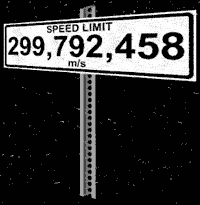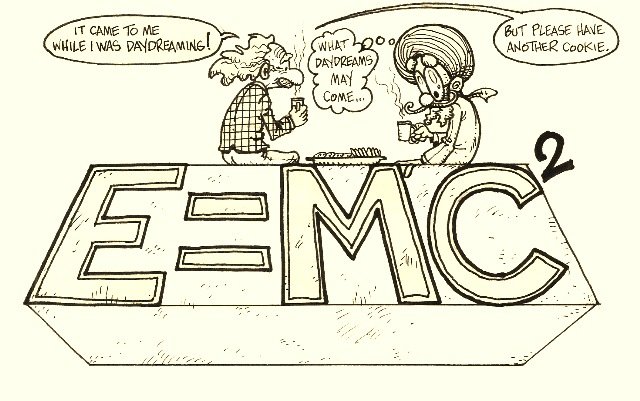What would happen if we can actually travel at the speed of light?

Hi, steemers as a scientist I always ask a question to myself, Many years ago I asked to myself what happened if I can travel at the light speed or something nearby, this sounds really tricky, but in this post, I going to make an explanation to this current question.
It’s not the first time that you’ve heard about the Relativity theory of Albert Einstein and what happens when we travel at speed nearby to light.
Firstable, We need to be clear in something: The time and space are not constant as we think; distance can variate between two different points depending on the speed that we are actually moving and the same thing happens with the speed at which time passes, it is not always the same.

This is the most important thing that happens when we go to the speed of light and the cause of all the weird effects that we are going to see. As always we have to mention that it is impossible for us to travel at the speed of light because we would need infinite energy, but since we can approach that speed as much as we want and the effects are the same.
What can we feel when we travel at speeds nearby to light?
A quick answer would be NOTHING. Yes, we would not fell anything, One of the oldest principles of physics is Galilean invariance or Galilean relativity:
States that the laws of motion are the same in all inertial frames. Galileo Galilei first described this principle in 1632 in his Dialogue Concerning the Two Chief World Systems using the example of a ship traveling at constant velocity, without rocking, on a smooth sea; any observer doing experiments below the deck would not be able to tell whether the ship was moving or stationary. Source
This means that as long as we do not accelerate, no matter how fast we move, we will not have the sensation of speed nor will we be able to do an experiment that allows us to know that we are traveling at the speed of light. That is why the effects should always be compared with another person.

Let's recap..
What do we have so far?
Let's say that we reach the speed of light softly, without killing ourselves in the try, We travel at the speed of light, we have a friend who is on Earth and who will serve as a reference, the difference between our time and our space and theirs, Will give rise to very curious situations.
The time and space are going to change when we reach the speed of light.
When we travel at the speed of light or almost closer, time passes much slower for us than for our friend on Earth. this is not something that we can not notice it because we have seen before that everything remains the same for us, but when we meet him we will that he is actually older than us. besides the distances we see them different, for us, the distances between points become shorter.

Ok, I'm going to explain with a very famous example:
The paradox of the train and the blades on the tunnel

Face this situation:
Let's put ourselves in the following situation: we are on a train and we travel at the speed of light and we approach a tunnel that measures exactly the same as the train. From outside our friend, who is quiet, sees us. The tunnel has some blades placed at the entrance and exit; the blades will lower and rise instantaneously when the train is in the tunnel.
Now the question is?: Will the blades cut the train or will we be unharmed because we travel at the speed of light?
The answer is kind of tricky because from the point of view of our friend, as we travel at the speed of light, the train is smaller than the tunnel (which is fixed in a place) and therefore we will go inside the tunnel without problems and the blades will not, They will prevent us from following our path in peace. However from our perspective, the tunnel is the one that moves towards us and therefore it seems much shorter than the train, which makes us suspect that our trip is going to have a very bad end, although weird things happen when we travel at the speed of light, what can never happen is that the blades cut and do not cut the train at the same time. What really happens to us?

the solution is that the blades do not cut the train (take a deep breath, now the strange thing comes) for our friend outside everything happens as we expect: the train enters the tunnel, the blades lower and climb while the train is inside the tunnel and we follow our path without a problem. For us, however, what happens is that when we enter to the tunnel the first blade closes and opens, without cutting the train, and when the end of the train has already entered the tunnel, the second blade goes down and climbs without cutting, why? Because when we travel at the speed of light the concept of Simultaneity becomes too flexible.
Yes, this is how Physics works in our world! Awesome right?
This is a test comment, notify @kryzsec on discord if there are any errors please.
Being A SteemStem Member
I hope they make it possible while I'm still alive :)
I hope the same thing!
Good day, please change the image sources to refer to the actual source of the image, rather than a direct link that gives us no clue who the original creator might be!
-- SteemSTEM
Hi, thanks for the quote, I'll change it asap!
If one was to travel with an acceleration of say 1G, then that would simulate gravity. If the acceleration lasts for nearly 2 years, then you would be travelling pretty close to the speed of light. My question is - as we know time slows down the faster we go, would this reduction of time show as linear or "s" shaped diffusion curve as the speed of light cannot be reached?
My second question is - when travelling close to the speed of light, would not the distance between two points be irrelevant from the point of view of the traveller as a 1000 light-year journey would only take a fraction of a second longer than a 10 light year journey? Thanks :)